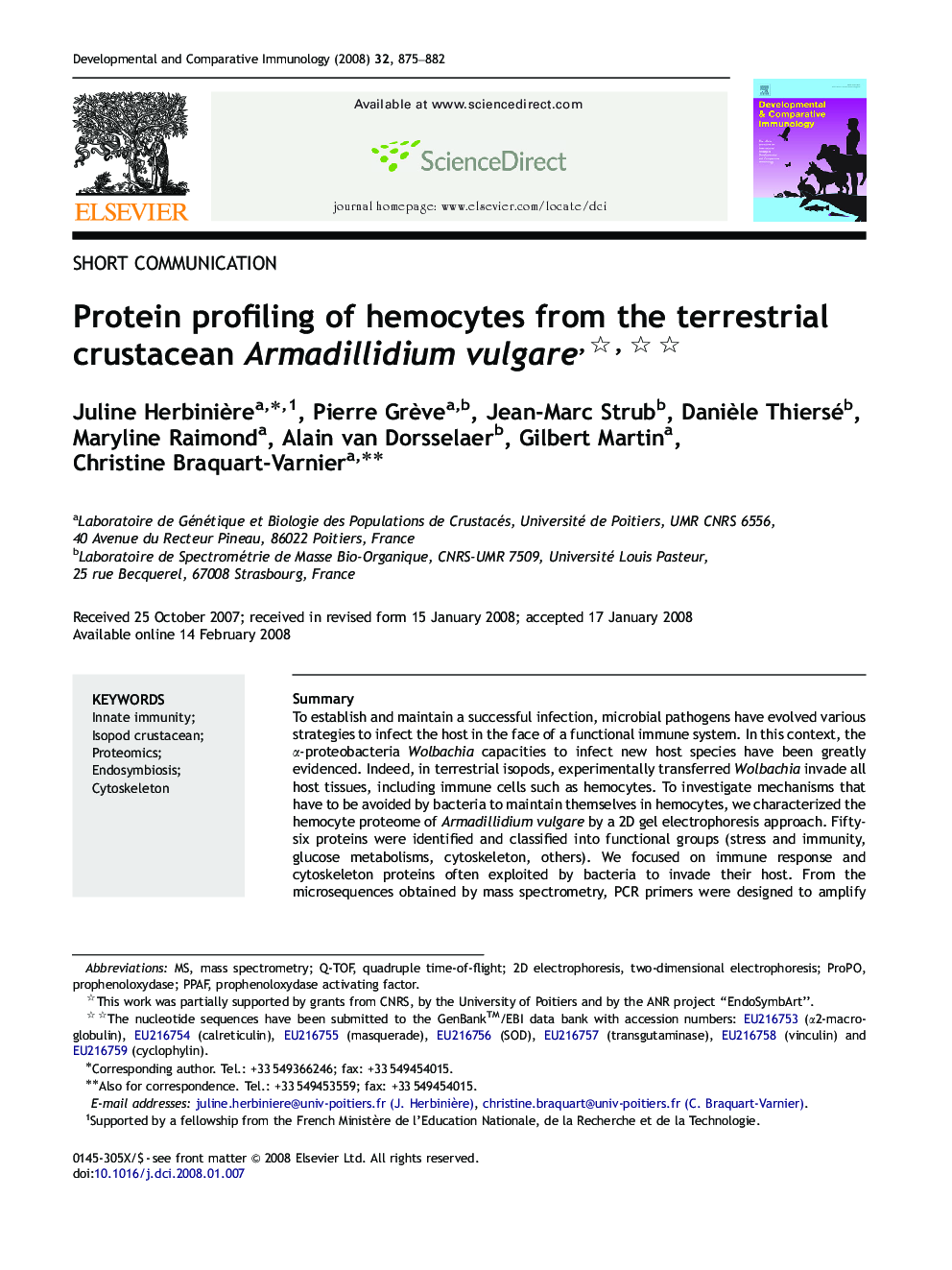| Article ID | Journal | Published Year | Pages | File Type |
|---|---|---|---|---|
| 2430031 | Developmental & Comparative Immunology | 2008 | 8 Pages |
SummaryTo establish and maintain a successful infection, microbial pathogens have evolved various strategies to infect the host in the face of a functional immune system. In this context, the α-proteobacteria Wolbachia capacities to infect new host species have been greatly evidenced. Indeed, in terrestrial isopods, experimentally transferred Wolbachia invade all host tissues, including immune cells such as hemocytes. To investigate mechanisms that have to be avoided by bacteria to maintain themselves in hemocytes, we characterized the hemocyte proteome of Armadillidium vulgare by a 2D gel electrophoresis approach. Fifty-six proteins were identified and classified into functional groups (stress and immunity, glucose metabolisms, cytoskeleton, others). We focused on immune response and cytoskeleton proteins often exploited by bacteria to invade their host. From the microsequences obtained by mass spectrometry, PCR primers were designed to amplify seven partial cDNAs encoding masquerade, α2-macroglobulin, transglutaminase, MnSOD, calreticulin, cyclophilin, and vinculin, confirming their expression in hemocytes.
